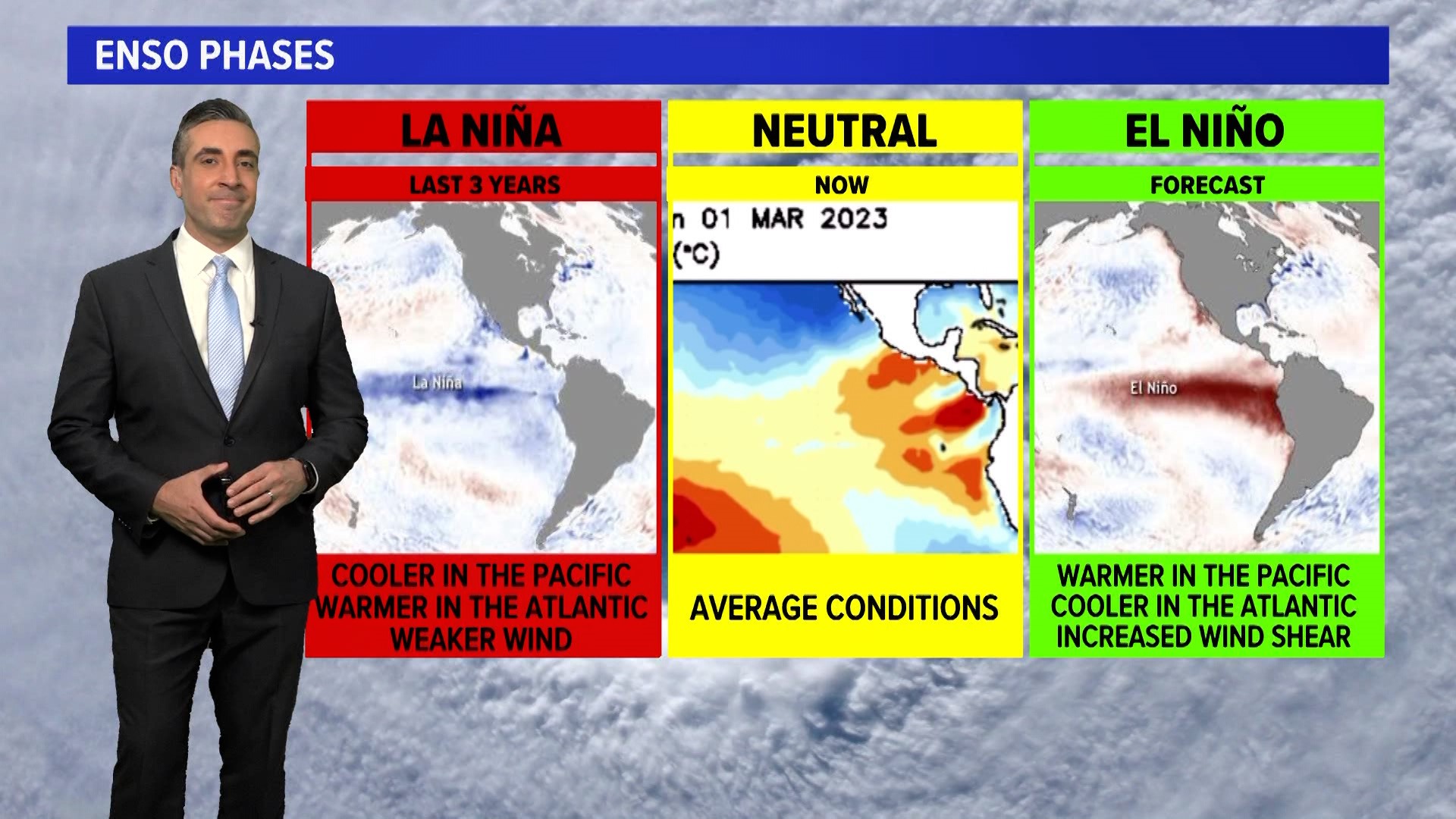HOUSTON — Big news coming down Thursday from the National Oceanic and Atmospheric Administration (NOAA) stating that the ongoing, triple-dip La Niña ENSO phase has come to an end.
ENSO, or El Niño Southern Oscillation, is a variation in ocean temperatures in the equatorial Pacific waters off the coast of South America.
During a La Niña phase, like the one we have been in for the past 3 years, there is anomalously cool sea surface temperatures found in that region. La Niña ENSO phases typically correlate to more active Atlantic Hurricane seasons due to a decrease in wind shear present over the Main Development Region, a breeding ground for tropical systems.
Wind shear is a change in wind direction and speed with height. Hurricanes are vertical systems and when wind shear is present they become tilted and unable to properly ventilate. As a result, they remain weaker and fall apart.
La Niña phases drive down wind shear presence. During transitional neutral years where there is neither La Niña or El Niño firmly in place, the connection to hurricane activity is slightly more loose, meaning wind shear can vary depending on which direction the transition is leaning towards.
El Niño phases are the opposite of La Niña. Warmer sea surface temperature anomalies replace the cooler ones in the equatorial Pacific waters off the coast of South America. Warmer waters lead to increased rising motion and convection. An increased occurrence of wind shear develops downstream of this convection leading to a more hostile environment for tropical systems. El Niño’s are typically connected with lower hurricane activity in the Atlantic basin.
Now, sure hurricane season activity has importance for southeast Texas, but what about our overall patterns during an El Niño or La Niña, what changes?
Well, what we’ve experienced the last 3 years is a retracted jet stream, or storm track to our north. This leaves Texas in a drier, warmer pattern with ridging prevailing. Just take a look back at this past summer: A prolonged, damaging drought and multiple triple-digit heat waves.
During an El Niño year we typically see that storm track diving farther south, delivering a wetter overall pattern and somewhat cooler as well.
How will this ENSO phase play out? It is forecast to transition into an El Niño this summer, but transitional periods during severe weather season can sometimes lead to increased tornado outbreaks across the U.S.

